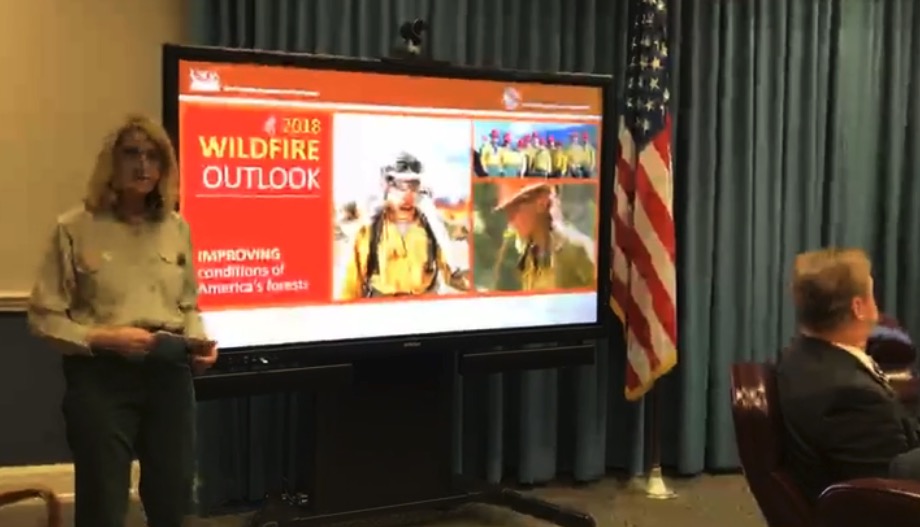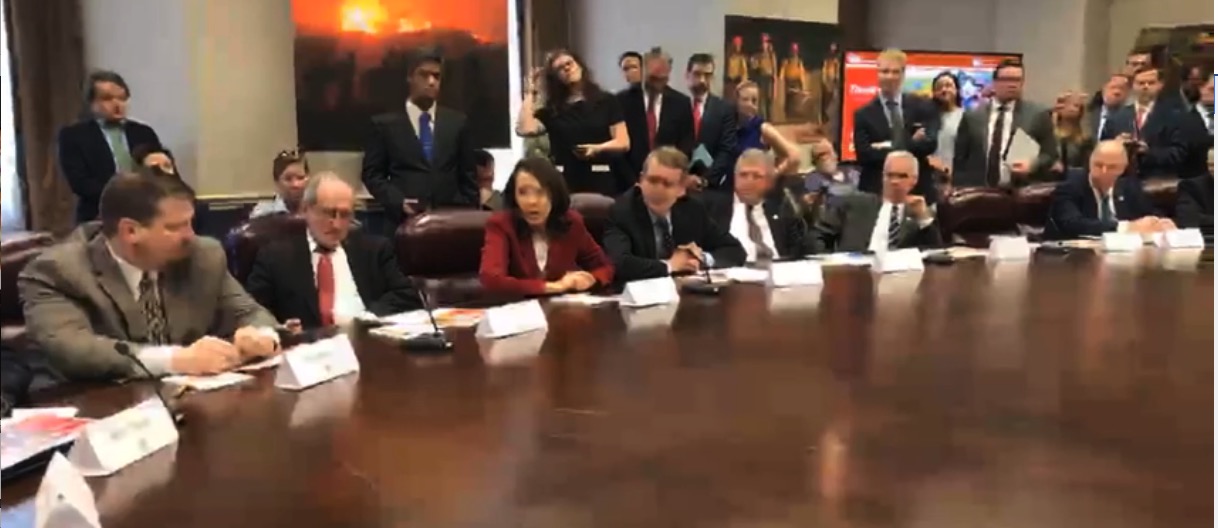
On Thursday the Departments of Interior and Agriculture briefed members of Congress about the outlook for wildfires in 2018.
There was a lot of talk about being more aggressive about attacking fires, firefighting aircraft, forest health, dead trees, logging, and reducing fuels in forests.
In response to a question by Washington Senator Maria Cantwell about expanding the use of drones on fires, the Secretaries of the two Departments announced that they would sign an agreement to more easily share resources and technology between the two Departments, including drones.

During her prepared remarks, Interim Chief of the Forest Service Vicki Christiansen said the Forest Service had “hundreds of aircraft ready to respond” to fires. The fact is, in addition to helicopters, in 2017 there were 20 large air tankers on exclusive use (EU) contracts. This year there are 13, with another 11 on call when needed (CWN) agreements plus one HC-130H Coast Guard aircraft outfitted with a temporary MAFFS tank. The Forest Service wants to get rid of the Coast Guard HC-130H currently being used and the other six that Congress directed them and the Air Force to convert to air tankers.
Randy Eardley, spokesperson for the Bureau of Land Management, told us today that no EU contracts for Single Engine Air Tankers have been awarded yet this year, but there is an existing CWN contract for SEATs which will be used. It is unlikely that an EU contract will be awarded, for the second year in a row. Before 2017 there were typically 33 SEATs on EU contracts every year. Approximately 10 have been working on a CWN basis in Texas and the Southwest during the last month or two.
A few of the politicians at the briefing criticized the reduction in the number of air tankers. At 16:00 in the video, Oregon Senator Ron Wyden expressed his concern.
Last week we were hearing in rural Oregon that there wouldn’t be enough air tankers on exclusive use contracts at the Forest Service…. What is the Service doing to ensure that the all call when needed air tankers are going to be there in terms of these fires.
Ms. Christiansen responded to the Senator:
Senator Wyden, I can assure you we will have the same number of large air tankers, 25, available to us on contract or agency operated. That’s in addition to the specialty that the Department of Interior provides in Single Engine Air Tankers and then we all have a selection of rotary helicopter resources. So we are confident in our ability to field the large air tankers and the other aviation assets. As I said before, we are always evaluating the mix of exclusive use and call when needed. Call when needed can be available within 30 minutes but often certainly within a couple of hours. And our predictive services I have great confidence in that we will bring those call when needed resources on as we anticipate the need expanding. It all happens out of our Interagency Fire Center in Boise.
Call when needed contracts for large air tankers specify that the aircraft should be able to be activated within 48 hours. And it is not as simple as a dispatcher making a phone call to the vendor, it must be handled by a contracting officer. But after being activated, they can remain in that status for an extended period of time, even if it is raining, and be subject to the same dispatch standards as exclusive use aircraft.
The quality of the video and audio below is very poor, but at least 90 percent of the audio is comprehensible.
The article was revised to clarify that while it is unlikely that an exclusive use contract will be awarded this year for SEATs, an existing call when needed contract can be used.

Under current political conditions with the denial of careful research, past experience and hard science by members of congress and the administration I wonder if they even understand what is going on?
And still, no one has the guts to say that the reason for the cuts is the fact that Congress did not provide a budget that would support the needs.